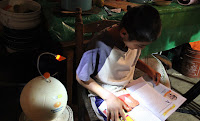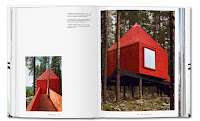It Is
such a clever invention! You can envision a fun, portable source of
energy that capitalizes on the popularity of soccer to address the
lack of electricity in the developing world.
The Soccket is a portable energy-harvesting source in the form of a soccer ball that captures the kinetic energy during game play and converts it into electrical energy, to charge lights and small batteries. After playing with the ball, the child can return home and use the ball to connect a LED lamp to read, study, or illuminate the home.
The Soccket is a portable energy-harvesting source in the form of a soccer ball that captures the kinetic energy during game play and converts it into electrical energy, to charge lights and small batteries. After playing with the ball, the child can return home and use the ball to connect a LED lamp to read, study, or illuminate the home.
And in
the developed world, the Soccket can be a great tool for teaching
about clean energy and a better way to charge our gadgets.
The
Soccket’s exterior is made of a custom waterproof EVA foam that is
extremely durable while remaining soft to the touch and it is
weighing only slightly more than a traditional soccer ball.
Currently, 30 minutes of play provides 3 hours of LED light.
Prototypes
of the ball first appeared in the media in early 2010, the
mass-produced version of the ball is the brainchild of UnchartedPlay, a social enterprise.
Uncharted
Play just launched the Kickstarter campaign, for implement the
production (that now has been limited to a few hundred Soccket balls
per week) in order to scale-up and purchase necessary equipment for
the manufacturing processes and will be accepting pledges until 28
March.
More
info
website
project Kickstarter
website
Uncharted Play
Photo
credit © Uncharted Play






















































